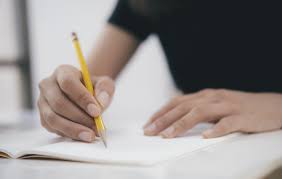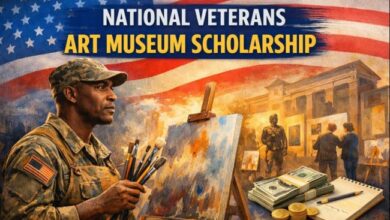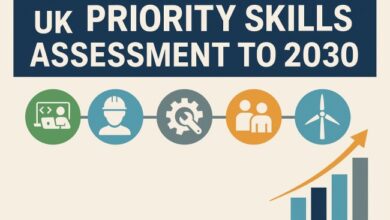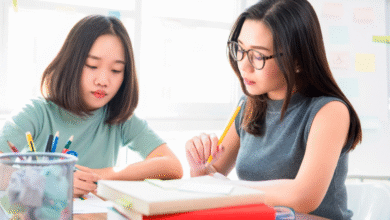Beyond Pens and Paper: The Evolution of Educational Supplies

At the turn of the millennium, a typical classroom was filled with the quiet scratch of pencils and the shuffle of Exercise Books. Teachers wheeled out bulky projectors that clicked and hummed, and pupils passed around glue sticks to piece together posters or art projects. Computers, if present at all, sat in a single corner of the room, often shared between a class of thirty. The heart of learning still lived in handwritten notes, chalkboards, and photocopied worksheets.
Step into a classroom today and the change feels almost futuristic. Touchscreen boards have replaced chalk, tablets sit alongside textbooks, and pupils can code miniature robots as easily as they once cut and pasted paper. Technology hums softly in every corner, from wireless printers to virtual reality headsets. Yet amid all this innovation, something essential remains—the need for tools that connect the physical act of learning with digital discovery. The humble glue stick still rolls across the table, a quiet reminder that creativity often begins with something simple and tangible.
A new landscape for learning
Modern education has moved far beyond pens and paper. Classrooms now function as interactive ecosystems where digital tools, traditional materials, and collaborative design all blend together. Robotics kits teach problem solving through movement and logic. Tablets and laptops encourage independent research and flexible learning. Touchscreen boards turn lessons into visual experiences, where diagrams can be expanded with a tap and global maps can come alive with light and sound.
These tools allow teachers to adapt lessons in real time. A science experiment can be filmed and replayed instantly. A history class can explore ancient ruins in three dimensions. Even art lessons have transformed, with pupils sketching on digital tablets before transferring ideas to paper. Despite all of this progress, however, the best classrooms still maintain a balance. Practical activities—cutting, building, sticking—keep learning grounded. Glue sticks and coloured paper continue to support lessons in design, geography, and literacy, reminding pupils that creativity begins in the hands before it reaches the screen.
How pedagogy is shaping supply choices
The shift in teaching philosophy has played a key role in transforming what schools buy and how they use it. Learning is no longer focused on memorising facts but on applying knowledge through critical thinking and exploration. This means classrooms now require materials that support both abstract reasoning and practical expression.
Teachers report that pupils learn best when they move between digital and physical modes of work. A child might research online, take notes by hand, and then use glue sticks to build a concept board that connects their ideas. This process of mixing media mirrors how adults solve problems in the real world. It helps pupils understand that ideas often evolve through a series of tangible steps rather than appearing fully formed on a screen.
Suppliers have noticed. The most forward-thinking companies now curate their ranges to reflect these hybrid needs. They provide bundles that pair coding kits with sketch pads, and they continue to supply craft materials alongside cloud-based tools. The supply industry has learned that evolution does not mean replacement—it means integration.
Technology meets tradition
One of the most striking changes in recent years is how traditional supplies are being reimagined for the digital age. Exercise Books with scannable covers allow pupils to upload handwritten notes to online folders. Smart pens record lectures while tracking handwriting on the page. Interactive whiteboards replace markers with digital styluses that simulate the texture of ink.
Yet the simplicity of physical materials still holds unmatched value. Teachers often mention that some pupils feel freer expressing themselves through tactile tasks than through screens. There is something grounding about the act of cutting, sticking, and arranging. Glue sticks, though modest, remain one of the most used classroom items. They encourage collaboration, sharing, and creativity—values that technology alone cannot replace.
As one art teacher put it, “When my pupils open their laptops, they focus. When they open their sketchbooks and grab a glue stick, they create. Both are essential, but they lead to different kinds of learning.”
The rise of sustainability
Sustainability has become a defining theme in the evolution of educational supplies. Schools and suppliers are increasingly aware of the environmental impact of their materials. Recycled paper, refillable pens, biodegradable glue sticks, and non-toxic paints are now part of standard procurement lists.
Suppliers are also rethinking packaging, reducing plastic and encouraging reuse wherever possible. Some schools even organise “supply swap” initiatives, allowing partially used items from one year to be shared with the next. This shift goes beyond cost-saving—it teaches pupils about responsibility and long-term thinking. When children learn to respect the resources they use, they understand that learning itself carries an environmental footprint.
The teacher’s perspective
While the evolution of classroom tools is widely welcomed, many teachers emphasise the need for balance. Too much technology can overwhelm both staff and pupils. The constant buzz of screens and software updates can distract from the core purpose of learning—understanding and connection.
Teachers value tools that simplify rather than complicate their work. They want digital aids that support creativity without replacing it. They still ask for boxes of glue sticks, stacks of Exercise Books, and bundles of pencils because these are the instruments that make learning visible and personal. A worksheet pinned to the wall or a handmade model built in pairs still carries meaning that a digital file cannot quite match.
As one teacher explained, “Technology gives us reach, but craft gives us memory. Pupils remember what they build with their hands.”
The future of educational supplies
Looking ahead, the classroom of tomorrow will likely be even more integrated. Artificial intelligence will personalise learning, suggesting exercises tailored to each pupil’s strengths and weaknesses. Smart supplies—pens that track progress, notebooks that sync automatically, glue sticks made from fully biodegradable materials—will bridge the gap between innovation and sustainability.
Augmented reality may allow pupils to design projects that come to life in three dimensions, while 3D printers could turn classroom sketches into prototypes within minutes. Yet even in that high-tech world, the foundations will remain familiar. The tools that encourage creation, curiosity, and collaboration will always have a place.
Education has never been just about the latest gadget. It is about the moments when a pupil understands something new, when an idea takes shape on paper, or when a messy collage brings a concept to life. Glue sticks may one day share the shelf with AI-powered devices, but their purpose will remain the same—to hold learning together, one idea at a time.



